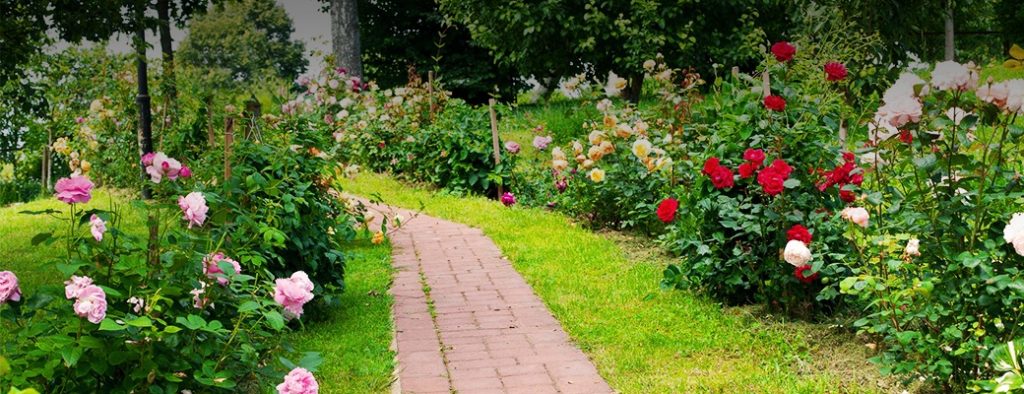As March rolls around, signaling the arrival of spring, it’s time to dust off the gardening gloves and tend to your lawn. After months of winter dormancy, your lawn is eager for some TLC to thrive and flourish during the warmer months ahead. Spring is a critical period for lawn care, setting the stage for a vibrant and healthy lawn throughout the year. Here are some essential lawn care tips to kickstart your spring gardening endeavors:

Spring Lawn Care Tips
Inspect and Clean Up: Before diving into any major lawn care tasks, take a stroll around your yard to assess its condition. Look for signs of winter damage, such as dead patches, compacted soil, or debris scattered across the lawn. Remove any fallen branches, rocks, or other clutter that may hinder the growth of your grass.
Rake Thoroughly: Raking your lawn in early spring helps remove accumulated thatch, dead leaves, and debris. Thatch buildup can suffocate grass roots and harbor pests and diseases. By raking gently but thoroughly, you can promote air circulation and allow sunlight to reach the soil, stimulating new growth.
Aerate the Soil: Over time, soil can become compacted, restricting root growth and inhibiting water absorption. Aerating your lawn in spring alleviates soil compaction by creating small holes that allow air, water, and nutrients to penetrate the soil more effectively. You can rent a core aerator or use a manual aerator for smaller lawns.
Seed and Overseed: If your lawn has bare patches or thin areas, spring is an ideal time to seed or overseed. Choose high-quality grass seed that is suitable for your region and lawn conditions. Rake the soil lightly to create a seedbed, spread the seed evenly, and then gently rake again to cover the seeds. Keep the newly seeded areas consistently moist until the grass establishes itself.
Fertilize Wisely: As your lawn awakens from its winter slumber, it craves nutrients to fuel its growth. Apply a slow-release nitrogen fertilizer in early spring to provide a nutrient boost without causing excessive top growth. Be sure to follow the manufacturer’s instructions regarding application rates and timing to avoid over-fertilizing, which can harm the environment and contribute to lawn problems.

Weed Control: Spring is prime time for weeds to sprout and compete with your grass for space, water, and nutrients. Take proactive measures to control weeds before they take over your lawn. Spot-treat emerging weeds with a selective herbicide or pull them out by hand. A thick, healthy lawn is the best defense against weed invasion, so focus on promoting strong grass growth.
Mow at the Right Height: Adjust your lawn mower to the appropriate height for spring mowing. As the weather warms up, gradually lower the cutting height to encourage denser turf growth and discourage weed proliferation. Avoid cutting more than one-third of the grass blade length at a time to prevent stress and scalping. Leave grass clippings on the lawn to return valuable nutrients to the soil.
Water Wisely: Proper watering is crucial for a healthy lawn, especially during the transition from spring to summer. Monitor rainfall and adjust your watering schedule accordingly, aiming for deep, infrequent watering rather than frequent shallow watering. Water early in the morning to minimize evaporation and fungal diseases. Pay attention to areas that dry out quickly or receive less rainfall, and supplement with additional irrigation as needed.
Address Pest and Disease Issues: Keep an eye out for signs of pest infestations or lawn diseases as spring progresses. Common pests such as grubs, chinchbugs, and armyworms can wreak havoc on your lawn if left unchecked. Likewise, fungal diseases like dollar spots and brown patches can quickly spread and cause extensive damage. Consult with a professional if you suspect a pest or disease problem, as timely intervention is key to preventing further damage.
Plan for the Season Ahead: Spring is not only a time for immediate lawn care tasks but also an opportunity to plan for the months ahead. Consider any landscaping projects, such as installing new flower beds, hardscapes, or irrigation systems, and start preparing accordingly. Take note of any areas that may need additional attention, such as shady spots or high-traffic areas, and develop a strategy to address them.
- Perennials:
- Daylilies
- Peonies
- Lavender
- Coneflowers
- Annuals:
- Petunias
- Marigolds
- Geraniums
- Zinnias

When you follow these spring lawn care tips, you can set the stage for a lush, healthy lawn that will be the envy of the neighborhood. Remember that consistency is key when it comes to lawn maintenance, so stay proactive and attentive to your lawn’s needs throughout the season. With a little effort and dedication, you can enjoy a vibrant outdoor space that enhances the beauty of your home and provides a welcoming environment for outdoor activities.
Looking for lawn care? Well, Mansell Landscape Management is the perfect partner for your next landscaping project. Embrace these landscaping and lawn care tips and give us a call today to discuss your next landscaping project!
